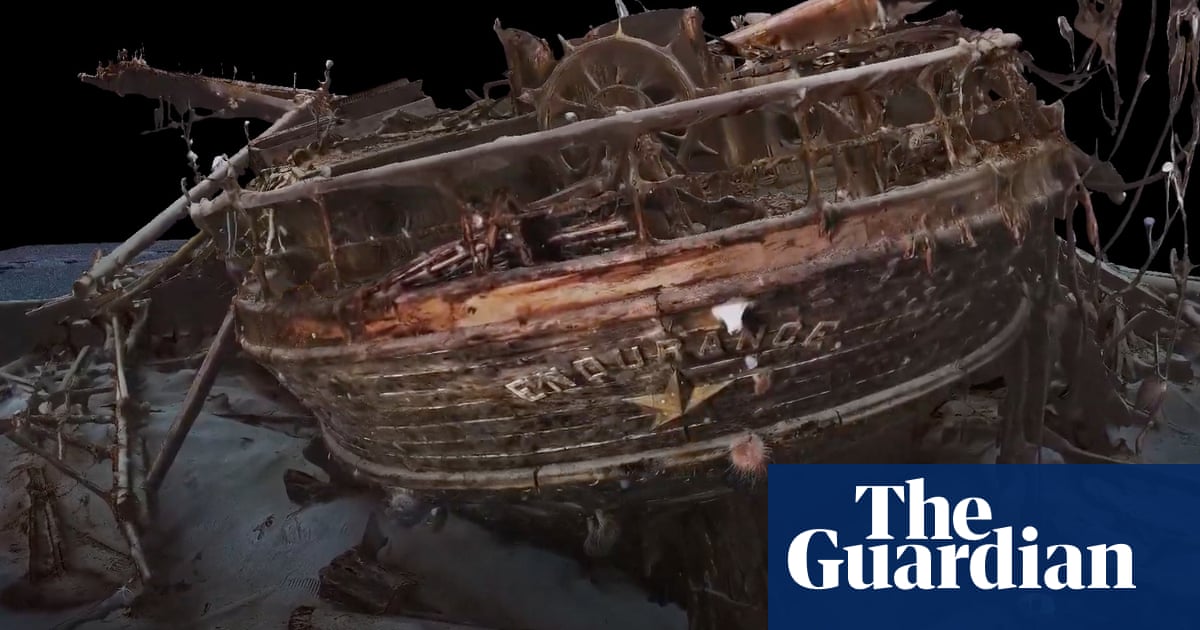More than a century after it sank below the icy Weddell Sea in Antarctica, forcing its crew to embark on one of the most celebrated survival quests in history, new images have revealed the remarkable state of preservation of Ernest Shackleton’s ship Endurance.
The famed vessel, which sank in 1915 after becoming stuck in pack ice, was discovered in 2022 resting at a depth of 3km below what Shackleton called “the worst portion of the worst sea in the world”.
The images, compiled from thousands of detailed 3D scans of the wreckage, show how little it has altered or decayed in the century since, with the ship’s rigging, helm and woodwork all remarkably preserved under the icy waters.
In addition, a number of the crew’s dining plates can be seen resting on the deck, along with a single knee-length boot, which may have belonged to Frank Wild, Shackleton’s second-in-command.
Perhaps most remarkably of all, the images show a flare gun among the debris – the same gun that was fired by Frank Hurley, the expedition’s photographer, as the Endurance sank, an event he described in his diary.
“Hurley gets this flare gun, and he fires the flare gun into the air with a massive detonator as a tribute to the ship,” John Shears, who led the expedition that found Endurance, told the BBC. “And then in the diary, he talks about putting it down on the deck. And there we are. We come back over 100 years later, and there’s that flare gun. Incredible.”
The composite images were compiled from 25,000 digital scans mapped by underwater robots when the wreck was discovered, employing new laser and photogrammetric technology for the first time at this depth, according to the team behind them. They reveal the damage to the hull and masts by the crushing ice before the ship sank – which was also captured at the time in pioneering film footage by Hurley – but show that the vessel is otherwise largely unaltered.
“It’s absolutely fabulous. The wreck is almost intact like she sank yesterday,” said Nico Vincent, whose organisation Deep Ocean Search developed the technology for the scans, along with Voyis Imaging and McGill University.
Shackleton and his crew of 27 sailed to Antarctica in late 1914 planning to attempt the first land crossing of the continent, but quickly became icebound and helplessly stuck. For months they could do nothing but wait, listening to the groans and cracks of Endurance’s wooden hull being crushed by the ice and salvaging what they could before it sank in November 1915.
Shackleton was forced to lead his men across the ice, eventually reaching the tiny Elephant island, off the Antarctic peninsula. When it became apparent they could not survive there, he led a small party of five in a small boat on an epic 800 mile (1,300km) journey across rough seas to South Georgia, where he and two others then hiked across the island’s glaciers to reach a whaling station on the other side of the island. Though his initial expedition was a failure, every crew member survived.
The images have been released to accompany a new National Geographic documentary about the expedition and the 2022 quest to find the Endurance. In another technical innovation, the film uses AI tools to reconstruct the voices of Shackleton and six of his crew to allow them to “narrate” their own diaries.
“Being able to bring those diary readings to life using AI means you’re listening to Shackleton and his team narrating their own diaries, and it is their voices,” said Jimmy Chin, one of the directors. “That was something that couldn’t have been done even a few years ago, which really brings a new aspect of the film to life.”

